Media Platform &
Creative Studio
Magazine - Features
In conversation: Mosaz
Joana Alarcão
Meet Mosaz (Zijun Zhao), a visionary artist whose intricate works bridge the gap between personal memory and collective cultural inheritance. Through delicate linework and symbolic forms, she transforms intimate emotions into universal visual narratives that speak to the complexities of contemporary Asian identity. From her studio practice rooted in Chinese philosophy to international exhibitions spanning Milan to Seoul, Mosaz creates art that feels like pages from a deeply personal diary—yet resonates across cultures and contexts.
19 August 2025

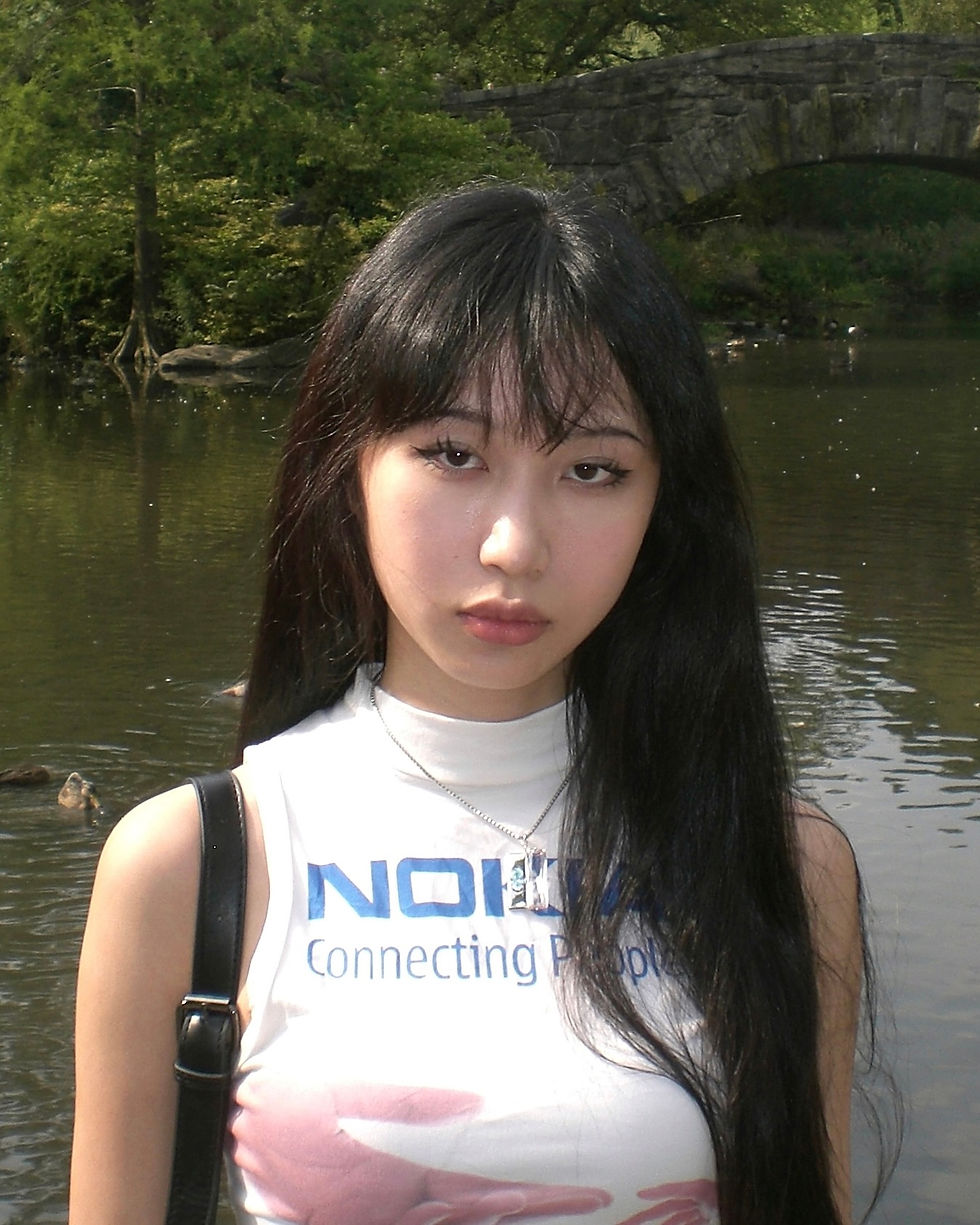

Mosaz (Zijun Zhao) is a visual artist whose practice investigates the interplay between cultural inheritance and individual spirituality. Through intricate linework and symbolic forms, her work channels memory, emotion, and subconscious narrative into immersive visual languages that reflect both personal introspection and collective resonance.
Mosaz’s artistic inquiry draws from Asian philosophical frameworks, reinterpreting traditional motifs through a deeply personal lens. Her signature approach involves weaving delicate, emotionally charged details into dense visual structures—what she describes as “small visual units” that mirror the tension between inner chaos and external form.
Mosaz holds a BFA from the Illustration Department at the School of Visual Arts in New York. Since then, her work has been exhibited internationally at venues such as the National Museum of Science and Technology in Milan, Palazzo Bembo in Venice, CICA Museum in South Korea, and Fukuoka Asian Art Museum in Japan. She has received recognition including the International Prize Leonardo da Vinci and Premio Firenze XLI Edizione, and her work has been featured in Art Maze Mag, BOOOOOOOM, The Woven Tale Press, and AI-Tiba9 Art Magazine, among others.
Reflecting on your artistic journey, what key influences have shaped your unique vision and ultimately led you to pursue the artistic path you're on today?
I have always been deeply fascinated by Chinese history and culture. In the beginning, when I was creating illustrations for school assignments with predetermined themes, I often tried to incorporate Chinese elements into my work, even though I could not fully express my own ideas. During the process of drawing, I constantly reflected on myself, listening to audiobooks about philosophy, psychology, history, and classic literature. These thoughts, along with memories of my personal experiences, made me realize that I have my own perspective on the world.
When I later had the freedom to create around open topics, I naturally started exploring my feelings about my family, relationships, and cultural background, producing works that felt like pages from a personal diary. Over time, as more people resonated with my work, I was invited to participate in exhibitions and received media coverage. For example, in April 2025, Corriere della Sera featured my participation in the 2024 Premio Firenze XLI Edizione in Italy, discussing both my work and my perspective as an Asian artist. Experiences like these reinforced my belief that deeply personal narratives can connect with people across cultures and contexts.
Your artistic practice profoundly depicts the flow of memory, emotion, and consciousness. Could you elaborate on how these concepts manifest creatively in your work, and how these themes resonate with contemporary Asian experiences?
I often use specific visual elements as carriers of memory, emotion, and consciousness. For example, hair frequently appears in my work as a metaphor for the way emotions and memories intertwine, dense, fragile, and impossible to fully separate. Similarly, figures such as Buddhist statues represent the sacred that we project from our own subjectivity, reflecting how cultural and spiritual symbols are shaped by personal perception.
Through these symbols, I explore how private feelings and collective memory overlap. In many Asian contexts, cultural heritage and spiritual belief are deeply embedded in everyday life, often passed down through rituals, objects, and unspoken traditions. My work reconstructs these elements through a personal lens, turning them into dreamlike narratives that blur the boundaries between the intimate and the collective. In doing so, I hope to evoke a sense of familiarity and strangeness, an experience that resonates with the complexities of contemporary Asian identity, where tradition and individual experience continuously interact and redefine each other.
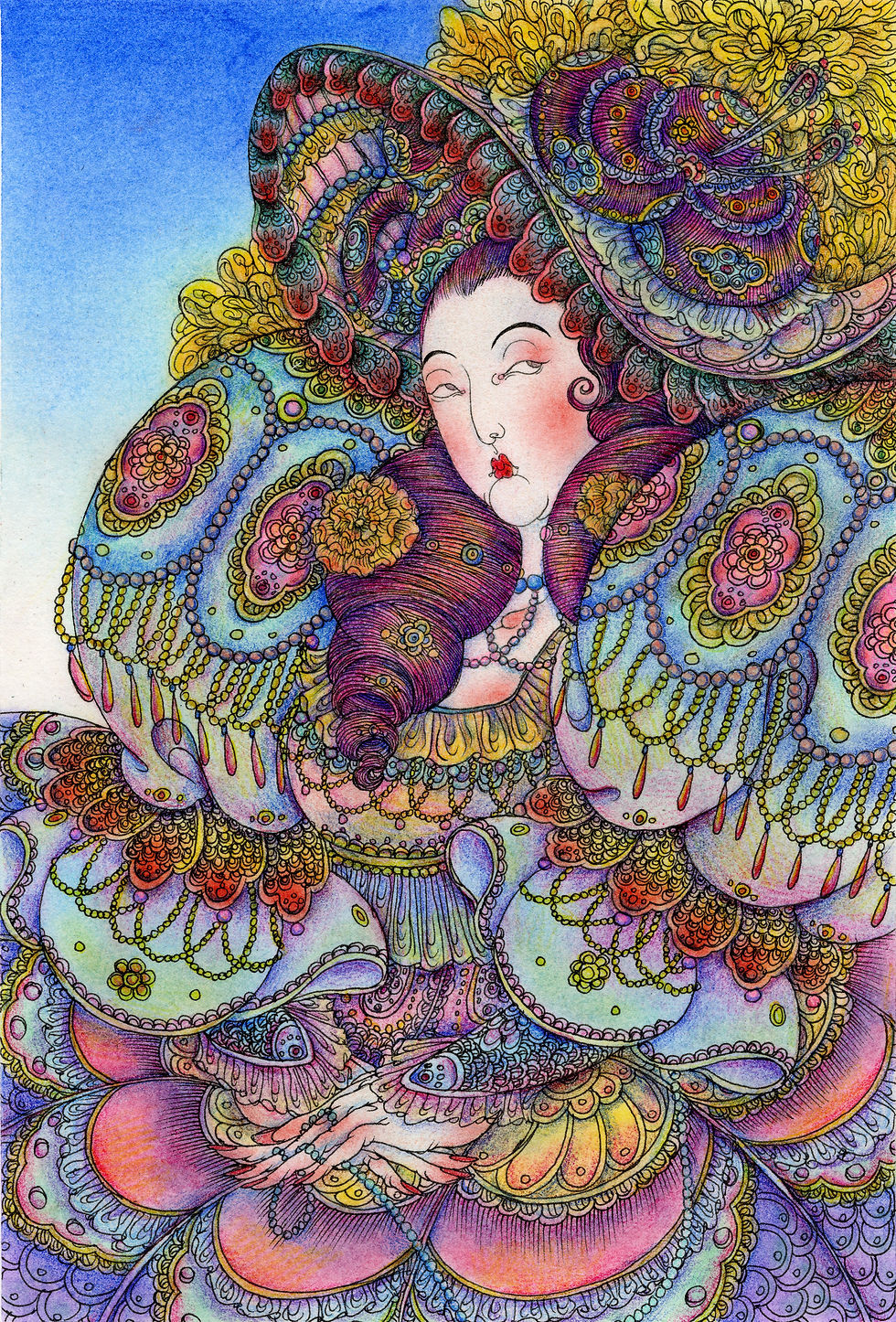
In your statement, you mentioned exploring the collision between traditional culture and the personal spiritual world. How do you navigate this tension in your practice?
I see tradition not as a fixed set of rules but as a living language that can be reinterpreted. I draw on cultural symbols and stories that feel deeply rooted in my heritage, yet I reshape them according to my own feelings, memories, and subconscious imagery. Rather than aiming for historical accuracy, I focus on how these elements resonate with my inner world.
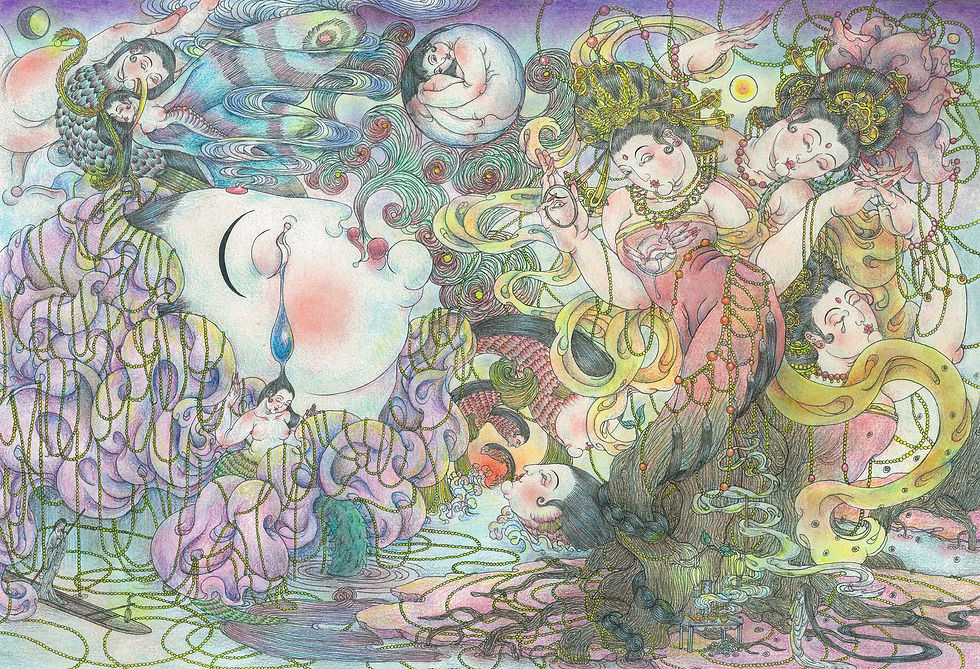
What can you tell us about your artwork, A Joyful Funeral? Could you walk us through the creative process of these pieces?
This series consists of three pieces, and to me, it isn’t necessarily about dying of old age, but about having the choice of when your life ends and believing that the next world you go to can look exactly the way you want it to. Because it is unknown, that uncertainty can be used to build a sense of safety in your own ideal world, like a sacredness we subjectively project onto it, something that feels holy to us but may ultimately be just an illusion. This way of seeing things recurs throughout my other works. This series was created when I was at one of the lowest points in my life, so in a way, I am exactly the kind of person who seeks comfort in what is uncertain.
Your artistic inquiry delves into the profound interplay between life and death, particularly as conceptualized within Asian cultural paradigms. What draws you to these profound existential themes, and what strategies do you employ to capture their essence while fostering a dialogue with your audience?
As I mentioned before, I constantly reflect and think about my own experiences and perspectives. Growing up in a Chinese family has shaped a certain mental framework that I often find myself trapped in. This framework can sometimes feel dangerous to me because it influences the way I perceive and judge everything around me. This sense of spiritual detachment from reality often leads me to search for ways of “escape” within my work, and death becomes one of the themes through which I explore that possibility.
When I approach such existential subjects, I rely on personal symbols and intuitive forms rather than literal depictions. I use intricate lines and fluid structures to express emotions that are difficult to define, allowing viewers to enter a space that feels both familiar and otherworldly. By leaving room for ambiguity, my works encourage audiences to project their own thoughts and emotions, turning the viewing experience into a shared reflection on mortality, impermanence, and the unknown. In this way, the dialogue is not didactic but open-ended, enabling each viewer to find their own meaning within the work.
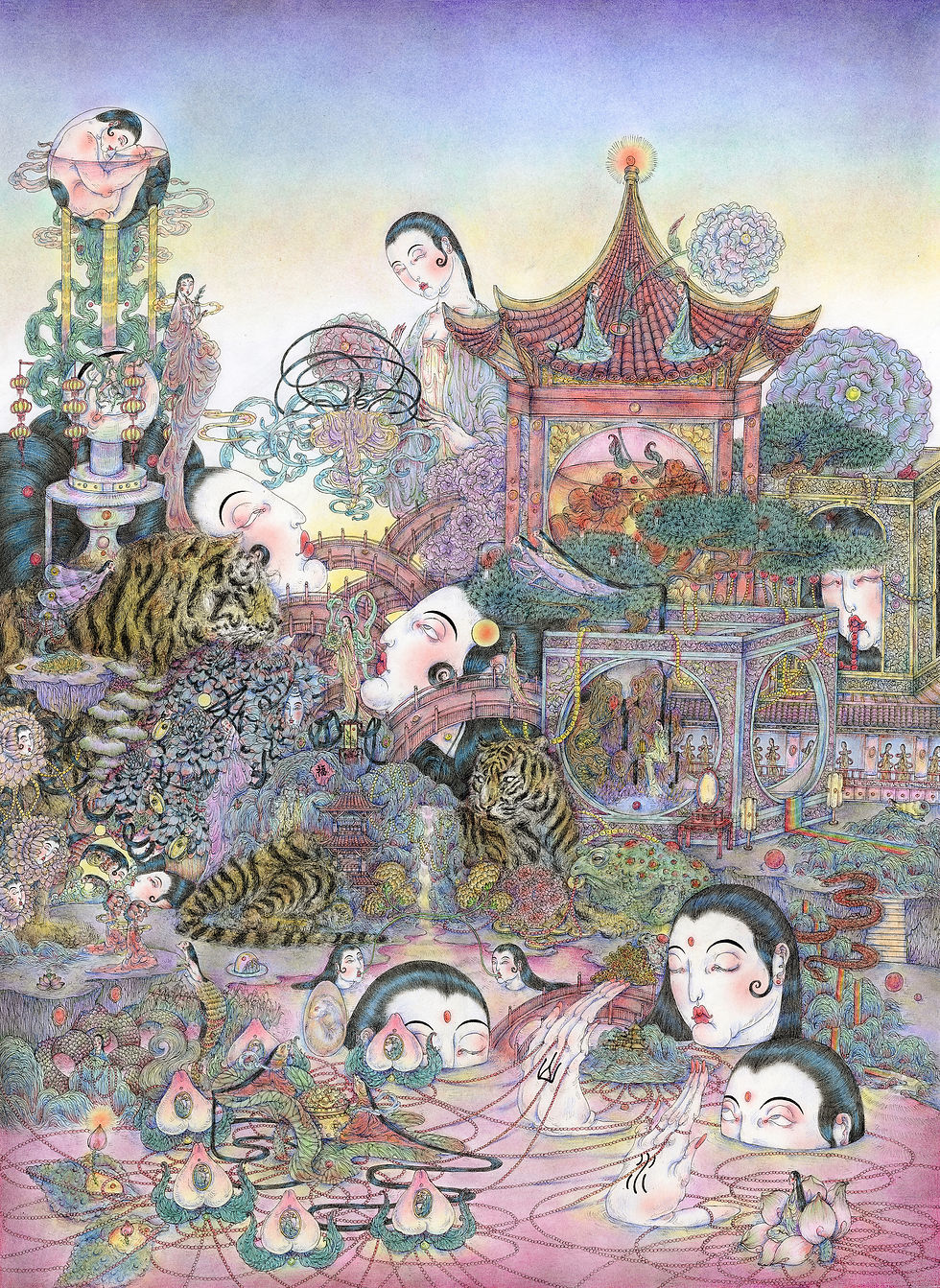
Your body of work showcases two visual narratives—one focusing on black and white, the other on the full color spectrum. How do these visual choices conceptually connect with the themes you explore?
The use of highly saturated colors in my work creates a sense of grandeur mixed with strangeness, producing a vivid visual impact that feels both temporary and oppressive, like a fleeting yet unsettling illusion. In contrast, my black-and-white pieces strip away color entirely, allowing the intricate and entangled quality of the lines to become the central focus. The absence of color highlights a certain purity while also emphasizing the twisted and ambiguous nature of the forms.
These two approaches reflect different aspects of the themes I explore. The colorful works often evoke a heightened, surreal atmosphere that speaks to excess, intensity, and the instability of perception. The black-and-white works, on the other hand, delve into the raw structure of memory and emotion, exposing how complex and intertwined they can be when stripped of any distraction. Together, they form two complementary visual narratives that mirror the tension between illusion and essence, chaos and order.

You describe weaving personal emotions into "small visual units" that reflect your mind's chaotic nature. Can you elaborate on this visual process?
My works are built from countless fragments, each carrying a trace of my inner state. These units often take the form of intricate lines, repetitive shapes, or delicate textures that emerge intuitively during the drawing process. I rarely plan the entire composition in advance. Instead, I respond to the blank spaces on the paper and gradually fill them with forms that feel emotionally charged.
How do you see your work contributing to the dialogue between tradition and modernity in contemporary art?
I don’t see my work as trying to give answers about tradition or modernity. Instead, I simply follow my own experiences and emotions, using cultural symbols that feel natural to me. When people from different backgrounds resonate with these works, it makes me genuinely happy because it shows that personal stories can connect across cultures. If my work can open up even a small space for dialogue between tradition and the present, or between different ways of seeing the world, that is already very meaningful to me.
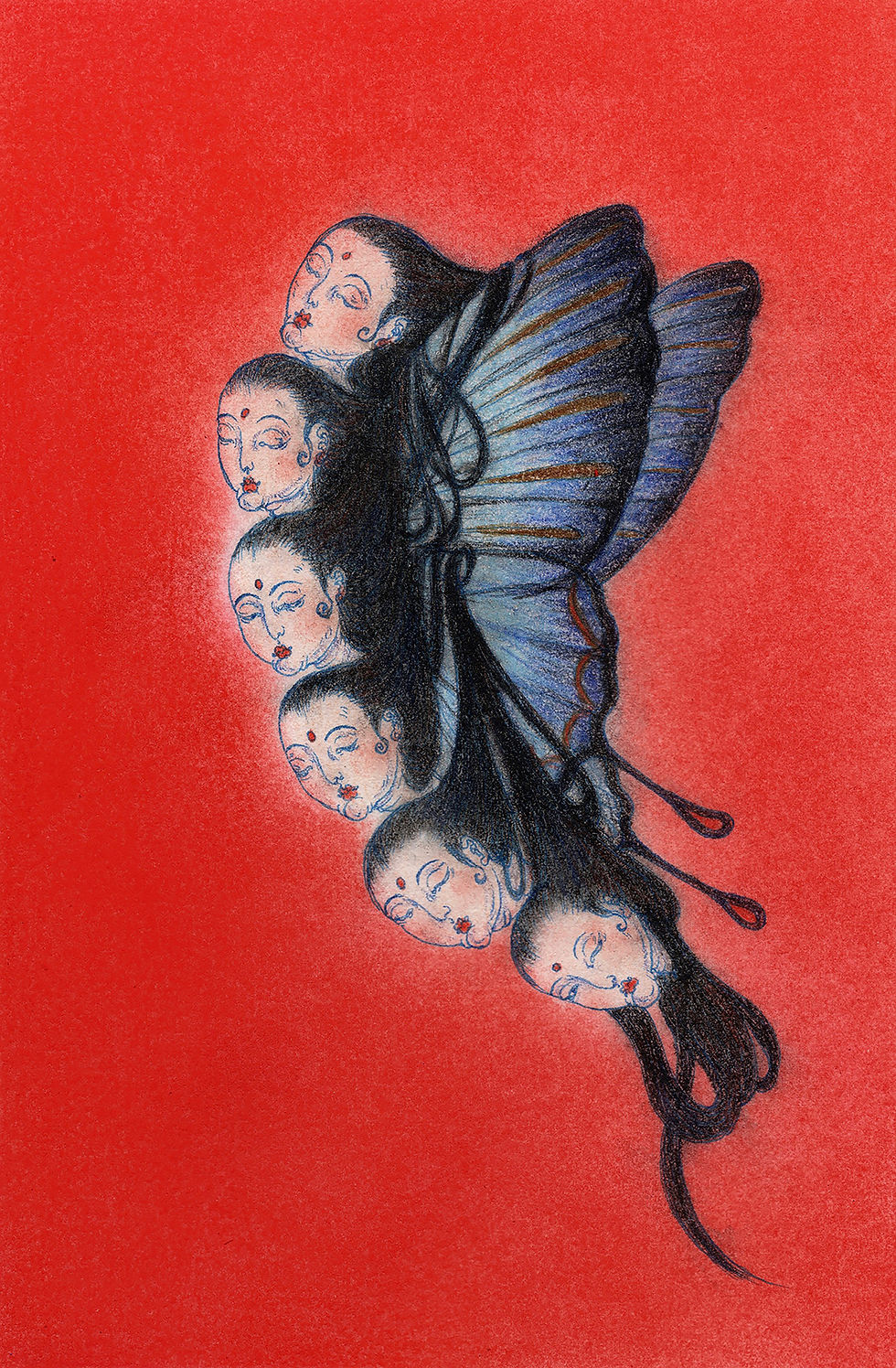
Art and artists play various roles in the fabric of contemporary society. How do you see artistic practices advancing sustainability and social consciousness?
Art can make complex issues feel real and personal. Through visual and emotional expression, artists can turn abstract topics like climate change or social inequality into experiences that people can feel and reflect on. At the same time, art can create dialogue. Exhibitions and public projects bring together people from different backgrounds, giving them new perspectives on issues such as cultural heritage, inequality, or human rights.
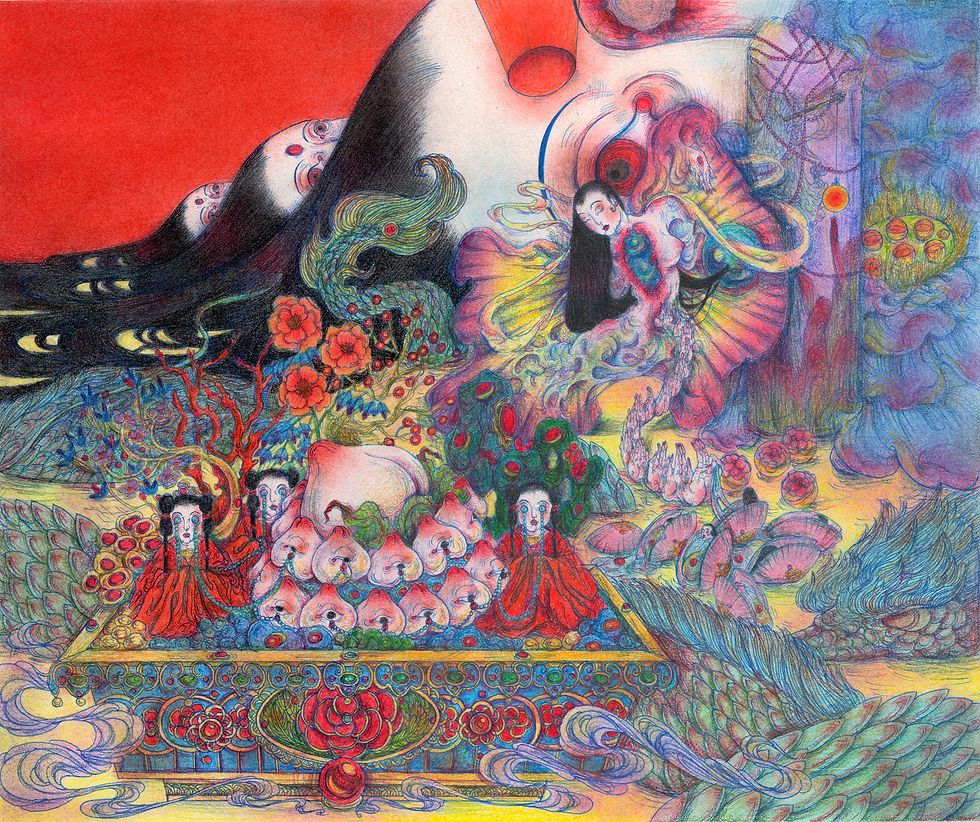
What message or call to action would you like to share with our readers?
I hope my work reminds people that personal stories and emotions can connect us, even across very different cultures and experiences. If there is one thing I would like to encourage, it is to stay open to seeing the world through someone else’s perspective. Small moments of empathy and understanding can create real change, both in how we relate to each other and how we care for the world we live in.
Learn more about the artist here.
Cover image: Nature, pencil on paper, 2022. By Mosaz
All images courtesy of Mosaz.


_Lauren%20Saunders.jpg)

